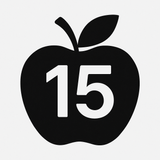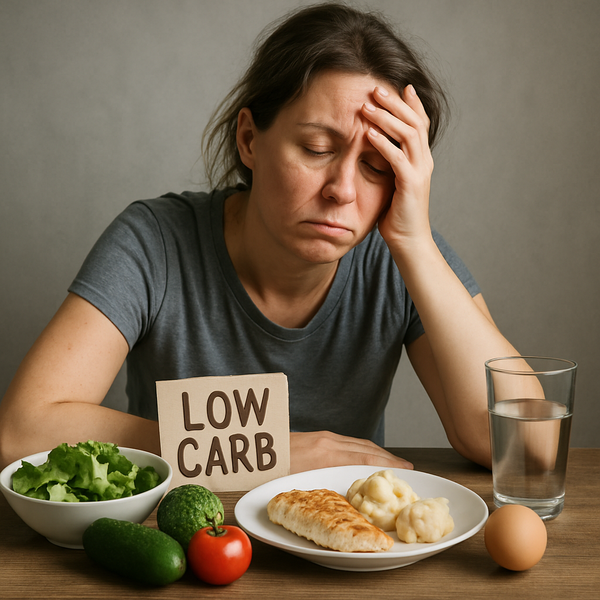What Not to Eat on a Paleo Diet: The Paleolithic No-List

Did you know that 57% of the modern Western diet consists of processed foods—items our Paleolithic ancestors wouldn’t recognize? However, research indicates that switching back to a Paleo diet might lower inflammation markers by as much as 70% in ten weeks.
The Paleo diet isn’t just about eating like a caveman—it’s about cutting out the modern foods that impacts your energy levels, gut health, and metabolism. But what specifically should you avoid? Let’s dig in.
🚫The No-List: What Not to Eat on Paleo
The Paleo diet emphasizes consuming foods that our Paleolithic ancestors would have consumed. This means focusing on whole, unprocessed foods and eliminating those which are introduced through modern agriculture and food processing. Below is a list of foods to stay away from:
- Grains like wheat, rice, oats, barley, corn, quinoa: Anti-nutrients like lectins and phytates present in grains, can interfere with nutrient absorption and may cause digestive issues. Additionally, their high carbohydrate content can result in blood sugar spikes.
- Legumes: Legumes such as beans and lentils, peanuts, soy are rich in lectins and phytic acid, which can impair nutrient absorption and induce inflammation in certain people.
- Dairy Products like Milk, cheese, yogurt, butter : Dairy was not consumed during the Paleolithic era. Additionally, 65% of adults lack sufficient lactase enzyme to properly digest milk sugar
- Refined and Added Sugars like White sugar, agave nectar: Refined sugars can result in rapid spikes in blood glucose levels, resulting in energy crashes and increased fat storage. Furthermore, prior to industrialization, refined sugar did not exist.
- Processed Foods like Packaged snacks, processed meats : it contains additives and unhealthy fats; not aligned with whole food emphasis.
- Refined Vegetable Oils like Canola oil, soybean oil, corn oil: which are high in omega-6 fatty acids, which promotes inflammation if taken in excess.
- Artificial Sweeteners like Aspartame, sucralose, saccharin: Artificial sweeteners may disrupt metabolism which results in increased sugar cravings, undermining weight management efforts.
- Alcohol like Beer, wine, spirits : Alcohol was considered a toxin and not part of the ancestral human diet. It damages liver function and hinders fat metabolism.
Golden Rule: Think like a caveman - If it didn't exist 10,000 years ago, it’s probably not Paleo.
Key Exceptions & Gray Areas in the Paleo Diet
✅ White Rice – Not strict Paleo, but athletes use it for quick fuel (low anti-nutrients).
✅Grass-Fed Butter/Ghee – Almost no lactose/casein; gut-friendly buttery hack.
✅ Dark Chocolate (70%+) – Technically a legume, but the antioxidants make it a guilt-free treat.
✅ Sweet Potatoes – Paleo’s favorite carb—packed with Vitamin A and NASA-approved!
⚠️ Fermented Dairy (Kefir) – Probiotics > lactose issues, but still dairy—proceed with caution.
⚠️ Nightshades (Tomatoes, Peppers) – Fine for most, but avoid if you have autoimmune issues.
⚠️ Coffee – Not ancestral, but linked to longevity (but skip the sugar and cream).
⚠️ Red Wine – Alcohol is a toxin, but resveratrol gets a pass— only occasionally.
⚠️ Pork (Pasture-Raised is OK) – Factory pork = inflammatory; wild boar would’ve been leaner.
❌ Quinoa – A seed, not a grain, but saponins can still irritate your gut.
What Should You Eat Instead on the Paleo Diet?
- Lean Meats and Seafood which includes Grass-fed beef, lamb, and pork, Free-range chicken and turkey and Wild-caught fish like salmon, tuna, and cod
- Eggs
- Vegetables which includes Non-starchy vegetables like leafy greens, broccoli, and bell peppers. Starchy vegetables in moderation, such as sweet potatoes and turnips
- Fresh fruits like apples, berries, and melons
- Nuts and Seeds which includes Almonds, walnuts, cashews, Chia seeds, flaxseeds, and pumpkin seeds
- Healthy Fats and Oils which includes Olive oil, avocado oil, coconut oil and Avocados
- Herbs and Spices which includes Basil, rosemary, turmeric, cumin, and other fresh herbs and spices
Key Reminders:
- Prioritize protein & fats—they keep you full and energized.
- Prioritize real food—if it didn’t exist 10,000 years ago, skip it
- Eat the rainbow—diverse plants = diverse gut microbes.
- Don’t fear natural sugars (fruit > fruit juice).
- Spices are medicine—flavor without processed junk.
- Listen to your body—some "gray area" foods (like dairy or white rice) may work for you.
- It’s not about perfection—it’s about progress. Even small swaps (like olive oil instead of canola oil) make a difference.
- The Paleo diet isn’t a short-term fix—it’s a lifestyle shift toward better digestion, stable energy, and long-term health.
The Paleo diet isn’t a short-term fix—it’s a lifestyle shift toward better digestion, stable energy, and long-term health.
Remember, even within Paleo, there are gray areas and room for personal choice—what matters most is listening to your body. Eat clean, stay mindful, and enjoy the benefits of eating the way nature intended
click here for simple paleo diet recipes which can be done under 15 minutes
References
- EatingWell – The Complete Paleo Diet Food List: What to Eat and What to Avoid
- Cleveland Clinic – Paleo Diet 101: What You Can and Can't Eat
- WebMD – Paleo Diet Guide: Benefits, Foods, and Tips
- Healthline – The Paleo Diet: A Beginner's Guide Plus Meal Plan
- Everyday Health – Paleo Diet: What You Can (And Can't) Eat




